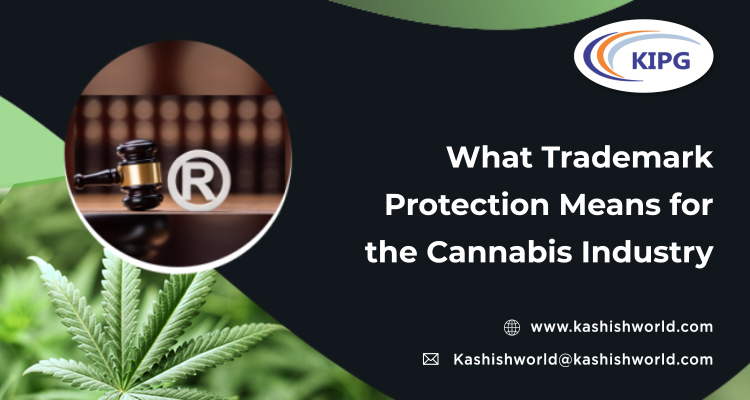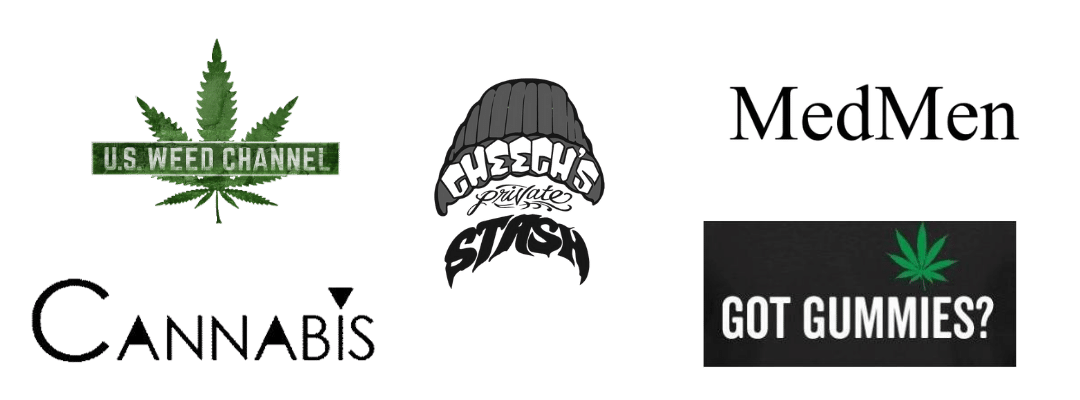
What may be brushed aside or under the carpet may not always be insignificant. If we consider the market overview, the global cannabis market is projected to grow from $28.266 billion in 2021 to $197.74 billion in 2028 at a CAGR of 32.04% in the forecast period 2021-2028. It is undoubtedly a fast-paced sector, given the liberation and relaxation in the understanding of medicinal use and permitted use across the globe.
Intellectual Property (IP), specifically in the form of trademarks and patents, has become a vital asset of such companies. Hence, it is imperative to understand and unwind how Trademark Offices have been dealing with such Trademark Applications and the points of consideration the industrialists should keep in mind while pursuing their regard in this field.
What are Cannabis-Related Trademarks?
Trademark Registration is guaranteed protection of rights emerging out of a safeguarded logo/device or wordmark concerning a range of goods and services to prevent illicit copying or use without prior permission of the trademark owner. Therefore, it is a mode of safeguarding the intellectual investment of the proprietor. It may also seek to designate the quality expected of that proprietor after attaining a respectable reputation and goodwill in the market.
Similarly, cannabis-related trademarks, often termed as ‘cannabis or marijuana marks,’ seek to extend the like protection to the cannabis industry. A cannabis business should consider Trademark Protection for the following reasons:
- It enables the protection of the brand in the present competitive and ever-growing industry.
- It assists in easier and cost-effective resolution of disputes on account of prior registration.
- It helps in market engagement and creating goodwill by gaining customer loyalty.
- It helps create an effective asset that can be licensed, transferred, or assigned for gains.
- Since it gives the exclusive right to use, it also gives the right to sue third parties for the infringing acts.
The standard protection is offered depending on the legitimacy of the goods or services. The European Union and the United States of America have mixed standards of legality since the commercialization of such goods for recreational use is illegal on a federal level, but on a personal level, it is decriminalized or unenforced in some states. Also, restricted medicinal use is permitted and legal in most states of the EU and the USA. It comes to be termed as ‘legal mosaicism’ concerning the cannabis industry, which is why it is a complicated and indeterminate issue whether a mark for such goods or services qualifies for trademark protection. It is, therefore, a subject matter of subjective interpretation, posing as a challenge for cannabis industries while developing and commercializing their brands and safeguarding their trademarks, both federally and within a state.
Ambit of Trademarks in the Cannabis Industry: Getting In to the Details

Most countries have banned or at least restricted the scope of sale and distribution of cannabis-induced products.
Considering the case of the United States of America, the Farm Bill of 2018 permits trademark registration for hemp products as it has been removed from the Controlled Substances Act’s (CSA’s) definition of ‘marijuana.’ As per the law, a product that contains cannabidiol (CBD), which is extracted from hemp, can afford federal registration provided the said product is not meant to be ingested and claims no such medical benefit, including the fact that the concentration of Tetrahydrocannabinol (THC) is less than 0.3%. The same would mean the inclusion of skincare products and cosmetics. In Germany, the concentration should be lesser than 0.2%. Apart from that, registration can be sought for products that are ancillary in nature, which includes merchandise like caps, apparel, or objects related to smoking. It is quintessential to showcase that the mark is or will be used for lawful commercial activities. Such trademarks have rather seen a surge in the USA. Consider the registrations of US Weed Channel, MedMen, Got Gummies, for instance. Hence, the USPTO allows narrower protection to such marks, but it does recognize some specific goods and services owing to the recent relaxation in the US Farm Bill. However, there is strict compliance to the Food and Drug Administration’s regulations in the US, leading to strict consideration of the THC content. Additionally, state laws further narrow the scope of such protection, resulting in a complicated setup as to what the scope of such marks may be.
Considering the case of the United Kingdom and the European Union, the fact that trademark applications are often accepted for products of the nature of cosmetics, consumptives, and medicines makes it a little similar to the position of law in the USA as seen above. There is no harmonized law in the European Union on cannabis usage.
However, all such applications where the goods or services may be “contrary to public policy or accepted principles of morality” will face outright rejection. Therefore, any such mark for goods or services that could lead to public upheaval or be seen as promoting any criminal or other offensive behavior will be rejected, including marks associated with illegal drugs. If we interpret the term ‘public policy,’ it is likely to have differential standards for each country. However, what remains the same is that any such goods or services that harm and risk the lives of people would be contrary to public policy. Therefore, living cannabis plants and seeds for recreational purposes and dangerous ordinary consumption will fall in such a category and not proceed for trademark registration.
Cannabis Marks: Registered in the Books
As discussed, the standards of morality and public policy may differ, but they have surely evolved with time. What was falling within the bracket a long time before has become routinely acceptable under restricted medical use and other forms of permitted use.

Where a mark is generic in nature, it is most likely to be prevented from obtaining trademark protection. Terms like ‘marijuana,’ ‘THC,’ and ‘Mary Jane’ will outrightly be rejected on the ground of their generic nature. Therefore, descriptive marks should only be used if they are stronger and harder to challenge. Consider opting for fanciful trademarks such as ‘Leafy’ or ‘THCHEESE’ (86871686) that are most likely to qualify for protection. Apart from that, arbitrary marks may also add to the distinctive value of a brand. It implies considering a term or a mark not related to the goods and services sought for protection. Examples of such registered marks are ‘Dr. Kent Since 2017’ (79266169) and ‘MMEDIBLES’ (1778176). If one seeks to retain some features or provide a hint as to the goods and services sought to be protected under a brand, suggestive marks may also be utilized. ‘Puf’n Canadian Owned’ (1841920) and ‘Next Leaf’ (1877981) can be considered as vital examples of such marks. Descriptive marks are most likely to face rejection on account of altered spellings, reference to the origin, or the like inferences; for instance, ‘THC Design’ or ‘Los Angeles Chronic.’ Even generic marks would be rejected for the like reasons.
Concluding Remarks
In summary, trademark protection for cannabis-related products can act like a double-sided sword with an embellished shield. It can be utilized to create a strong tangible asset with the help of intellectual creation.
Although the standard interpretation of registration of such goods varies, it can be agreed that most jurisdictions in the USA, UK, and EU have little or no issues concerning the registrability of marks for cannabis or cannabis-related products, which are directed to be used for medical or cosmetic purposes. However, the trademark offices are most likely to refuse applications that essentially intend to safeguard a mark to be used for recreational intoxication purposes. Therefore, seeking trademark protection for such marks may not be a straight cakewalk but an uphill battle with legal constraints apart from the Trademarks Act. Hence, it is strongly recommended that until the proper jurisprudence on the matter is concertized, it is necessary to look into recent developments and how the law takes shape eventually in the times to come.

